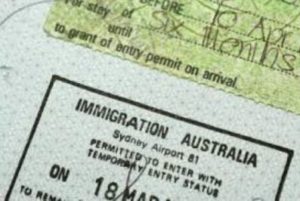Numbers of temporary visas soar
 International students, graduates and people on bridging visas are fueling a rise in temporary migration to Australia.
International students, graduates and people on bridging visas are fueling a rise in temporary migration to Australia.
Figures released last week suggest the number of temporary visa holders in Australia in June increased by 107,000 in the past year, a rise of 5 per cent.
Almost 2 million temporary visa holders were in Australia in June, up 107,000 in a year
The data comes shortly after the Government announced a 20,000 cut in annual permanent visas.
These new visa holders easily eclipse the Government’s cuts to permanent visas over the same period.
The number of current bridging visas is now at 176,000, representing a rise of 40,000 in the past year.
Former immigration department official Abul Rizvi told media that rise was “unheard of”.
“Bridging visas were introduced as a means of dealing with a situation of keeping a person legal while we processed their visa — it was a stopgap measure and that’s how it should be viewed,” Mr Rizvi said in an interview with the ABC.
“If bridging visas are increasing in number, what it says is that the immigration department is not able to process the visas quickly enough,” he said
Ten thousand extra Chinese nationals, 7,000 more people from India and another 4,000 Malaysians were in Australia on bridging visas in June compared with a year ago.
“When I was running the program, a figure of 30,000 was regarded as problematic. 200,000 is just a frightening number,” Mr Rizvi said.
Meanwhile, it has also been reported that the queue for Australian citizenship has blown out by more than 300 per cent.
This has left migrants who have been in Australia for years without access to student loans, an Australian passport or eligibility to vote.
Department of Home Affairs data shows the number of residents waiting for citizenship has risen from 27,000 to 189,000 under the current government.
A spokesperson for Multicultural Affairs Minister Alan Tudge said that almost all the recent growth in short-term visas has been due to rises in international students.
Home Affairs Minister Peter Dutton recently said his party had “reintroduced integrity” into the migration program when last year’s permanent cut was revealed in July.
Migration agents contacted by iMPACT said the rise in bridging visas meant that some migrants were taking advantage of delays to enjoy more time in Australia.
They said the rise was because of two factors — the increasing numbers of visa refusals going to appeals and an increase in visa processing times.
The post-study work visa for international students provides two years following study to international students who complete degrees of at least two years.
Primary holders of this visa — that is, excluding partners or children — have increased from 21,000 to 55,000 in the past three years.
International students are allowed to work for 20 hours per week during semester under their visas.
A study released this week by London Economics, commissioned by the Group of Eight universities, highlighted the economic contribution of international students.
It found overseas students paid an average net tuition fee of $58,000 and they also contributed more than $50,000 each in rent and other living expenses.
Laurie Nowell
AMES Australia Senior Journalist












